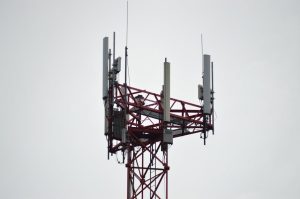
The Role of Satellites in Global Weather Forecasting Systems
The role of satellites in global weather forecasting systems is a critical one, as they provide a significant amount of the data and imagery used to predict weather patterns and storms. Satellites have been used for weather forecasting for decades, and their importance has only continued to grow as technology has improved. In this article, we will explore the role of satellites in global weather forecasting systems, including the different types of satellites used, the data they collect, and how that data is used to predict the weather.
Types of Satellites Used in Weather Forecasting
There are several types of satellites used in weather forecasting, each with its own unique capabilities and responsibilities. Geostationary satellites, such as the Geostationary Operational Environmental Satellite (GOES) series, are used to monitor the weather over a specific region of the Earth. These satellites are positioned in a geostationary orbit, which allows them to remain stationary over a specific point on the Earth’s surface. This allows them to provide continuous imagery of the weather patterns in that region. Polar-orbiting satellites, such as the Joint Polar Satellite System (JPSS), are used to collect data over the entire Earth, including the polar regions. These satellites are positioned in a polar orbit, which allows them to cover the entire Earth as it rotates beneath them.
Data Collected by Satellites
Satellites collect a wide range of data that is used in weather forecasting, including visible and infrared imagery, atmospheric temperature and humidity profiles, and ocean current and wave data. Visible imagery is used to monitor cloud patterns, storm systems, and other weather phenomena. Infrared imagery is used to monitor temperature patterns, including the movement of cold and warm fronts. Atmospheric temperature and humidity profiles are used to predict the formation of clouds and precipitation. Ocean current and wave data is used to predict storm surges and coastal erosion.
How Satellite Data is Used in Weather Forecasting
Satellite data is used in a variety of ways in weather forecasting, including nowcasting, short-term forecasting, and long-term forecasting. Nowcasting involves using current weather conditions to predict the weather over the next few hours. Short-term forecasting involves using current weather conditions and forecast models to predict the weather over the next few days. Long-term forecasting involves using climate models and other data to predict the weather over the next few weeks or months. Satellite data is also used to predict severe weather events, such as hurricanes, tornadoes, and blizzards.
Conclusion
In conclusion, the role of satellites in global weather forecasting systems is a critical one, providing a significant amount of the data and imagery used to predict weather patterns and storms. The different types of satellites used, including geostationary and polar-orbiting satellites, collect a wide range of data, including visible and infrared imagery, atmospheric temperature and humidity profiles, and ocean current and wave data. This data is used in a variety of ways, including nowcasting, short-term forecasting, and long-term forecasting, to predict the weather and warn of severe weather events. As technology continues to improve, the importance of satellites in weather forecasting will only continue to grow.
